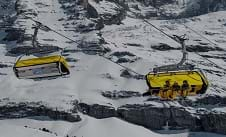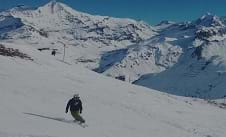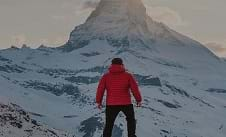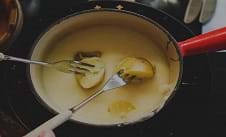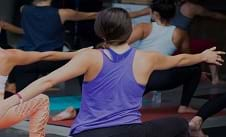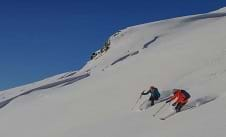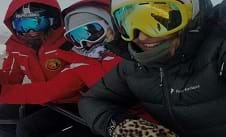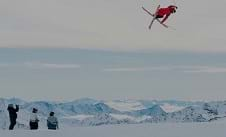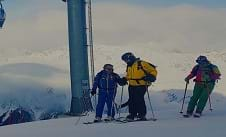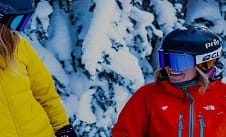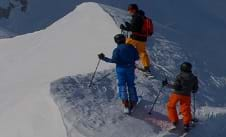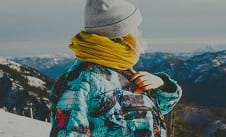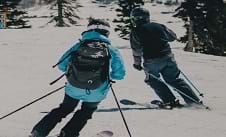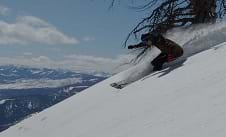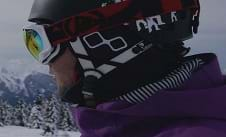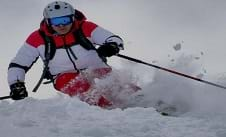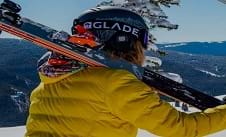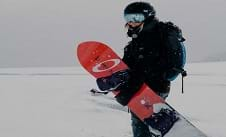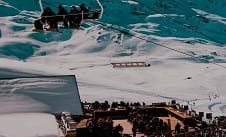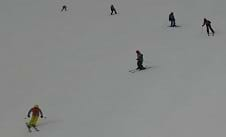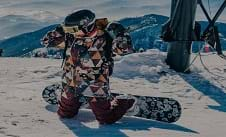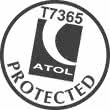Ski Clothing
There’s nothing quite like shopping for all your ski gear to get you excited and in the mood for your eagerly anticipated ski holiday. Whether it’s your first-time skiing, or if you’re a seasoned shredder, we’ve got you covered with our ultimate ski clothing guide.
There isn’t really any difference between ski and snowboard clothes. For snowboarding, you may prefer to choose a looser and longer fitting jacket to allow for more movement. A longer fitting jacket will also help add an extra layer to your ski trousers, so they stay dryer for longer. For ski holidays, there is a lot to think about for your packing and it is good to make the most of the space in your suitcase by shopping wisely and opting for multi-purpose gear.
with your own travel concierge. Don’t hesitate to drop us a line – we’ll
help plan your perfect Ski Holidays.
020 7770 6888 ← online or call ↴
020 7770 6888
Snow jackets & trousers
There are a whole host of options to choose from when it comes to your ski outfit, and there’s something for everyone to suit individual style. Ski jackets and trousers need to be warm and waterproof. They offer a range of features and there are options to suit all budgets. For more information check out our ski jacket and ski trousers pages.
Top tips for buying ski jackets & trousers:
- Waterproof, windproof and breathable are the top three things to look out for when buying ski jackets and trousers.
- You don’t have to break the bank on your outerwear, so try cheaper shops such as Decathlon and buy during the end of season sales.
Ski gloves & mittens
Ever dropped a ski glove off a chairlift into the abyss and had to ski down sans-glove? Take it from us, your hand will feel like it’s going to fall off. Ski gloves are an essential packing item as you will need to use them daily. Ski gloves must be waterproof and windproof, so for this reason, regular winter gloves are not sufficient. Invest in decent ski gloves to keep your hands insulated and protected from the elements.
Top tips for buying ski gloves & mittens:
- Make sure your ski gloves are waterproof with a thick, breathable lining. Look for materials such as Fibrefill, which are ideal for cold and wet conditions.
- Linings made from fleece, wool or synthetic blends have good sweat wicking qualities.
- They should fit snugly, allowing enough room at the end to pinch a quarter of an inch of fabric, and not be too tight when making a fist.
- Snowboarders will benefit from gloves with a wrist leash (strap on the glove that can attach around your wrist. if you find yourself taking off your gloves frequently to do up your bindings – this will minimise the risk of losing your gloves.
Ski socks
Keep your tootsies toasty with some strong, thick thermal ski socks. The best ski socks are made from organic fibres, such as Merino Wool mixed with synthetic fibres, such as nylon. Look out for socks with adding padding the toes and heal to reduce irritation and pressure on these areas. Snowboards often prefer a thicker sock as snowboard boots don’t fit as tight as ski boots, but generally, ski socks are suited for both skiers and snowboarders.
Top tips for buying ski socks:
- Look out for bargains in TK Maxx or end of season sales.
- Check the warmth of the socks, if you have bad circulation then you'll want socks with a high rating. Skiing at the start of the season will be colder so you'll want warmer socks compared to skiing towards the end.
- You will require 2-3 pair of ski socks for a week-long ski holiday.
Ski Hats
You will certainly need a woolly hat not only as an accessory to wear in resort, or for extra warmth under your helmet, but to keep you warm for those alfresco lunches up the mountain, as heat is lost most through your head. A hat or beanie isn’t essential for skiing or snowboarding, but many people choose to wear one for one and off the slopes. Some choose to wear a beanie hat under their helmet whilst skiing, for added warmth and style, and others carry on in their bag to wear when stopping for a drink break or lunch when you take off your helmet.
Top tips for buying ski hats:
- Look out for materials such as micro fleece, wool, acrylic, merino wool as these will serve as the best way to not only keep your head warm, but also dry with their moisture-wicking properties.
- Choose your style – a popular one being the beanie
Ski base layers
Ski base layers are a necessity for your packing checklist. Base layers provide the initial layer of warmth, while being absorbent. There are two types of base layers that work effectively. Synthetic base layers being the cheaper of the two options and is great for keeping you dry. The alternative material is Merino Wool, which is a fabric that has a natural ability to regulate body temperature. It is also antibacterial, thus preventing any lingering odours and is great for sensitive skin. You can buy ski base layers from any shop that sells ski wear, they will vary in quality though, but there are decent options to suit all budgets.
You will need base layers for your upper and lower body, to keep your legs warm under your ski trousers. Helly Hansen has a great selection too. For a good quality cheaper option, Decathlon has some Merino wool base layers for under £20. BAM also offers some excellent eco-friendly clothing options, made from bamboo and organic cotton, which is has sweat-wicking properties and priced at around £40.
Top tips for buying ski base layers:
- Choose a quick-drying, moisture-wicking material, such as a polyester blend or merino wool
- Make sure your base layers are tighter fitting and full length
Ski buff, masks & balaclavas
For those chilly chairlift rides and breezy descents, a ski buff, mask, or balaclava is help protect your face and neck from windburn. The best materials for a ski buff/mask/balaclava are a synthetic blend of polyester and spandex fabrics or merino wool. Read our ski accessories guide for more information.
Top tips for buying ski buffs, masks & balaclavas:
- Look for functionality – need to keep your face warm, wick away sweat and protect your skin
- Versatile products that offer the ability to cover the face and head as well as the neck are good multipurpose options
Ski clothes FAQ:
Ski clothing comes in several forms:
- Outer layers like jackets and salopettes.
- Inner layers such as base layer tops and leggings.
- Socks and glove liners
- Gloves/mittens
- Hats, neck warmers, balaclavas.
- Ski suits, a one-piece ‘onesie’ style outer layer
You’ll need to provide your own ski clothes as we don’t offer clothing rental via our suppliers (except for some Lapland trips where thermal suits are included or pre-bookable due to the low temperatures). Generally, you cannot rent ski clothing in resort so you will need to purchase a ski jacket, ski trousers, thermals, gloves, goggles and socks for your ski holiday.
There are many retailers where you can buy affordable clothes, some are seasonal but there are websites that sell ski clothing all year round. Try Mountain Warehouse, Trespass, Decathlon and Dare2b. At certain times of the year, great bargains can be found in Aldi, Lidl and TK Maxx. Find out where to buy cheap ski clothes.






